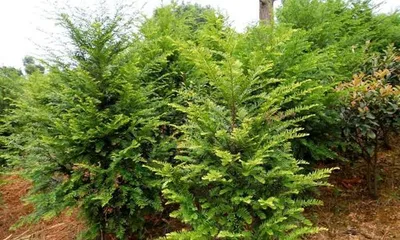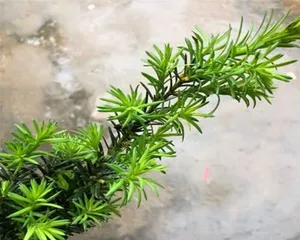Taxus is a cold-tolerant, shade-loving evergreen species widely used in landscaping for parks, courtyards, and other green spaces. For the cultivation of Taxus, selecting the appropriate soil is crucial. This article will address the ecological characteristics and planting requirements of Taxus to introduce relevant knowledge about soil preparation and planting soil.

Basic Characteristics and Cultivation Requirements of Taxus
Taxus is a type of tree with dense, long, and smooth bark, dark green needles, and spherical or oval-shaped seeds. Taxus has specific requirements for temperature and humidity, and it grows better in environments with lower temperatures and higher air humidity.
Selecting the Best Planting Soil for Taxus
Appropriate soil can provide sufficient nutrients and moisture, which is beneficial for the growth of Taxus. When selecting soil, it is essential to comprehensively consider its characteristics such as fertility, aeration, and water retention.

Common Methods for Preparing Taxus Soil
Common methods for preparing Taxus soil include: peat mixed with leaf mold, peat mixed with sand and tulip poplar leaf mold, and peat mixed with sedge peat and sand. These methods can all meet the growth needs of Taxus.
The Role and Characteristics of Peat Soil
Peat soil is an acidic soil with good water retention and aeration. In the cultivation of Taxus, peat soil can effectively improve soil fertility, enhance the soil's water retention capacity, and also provide good aeration.
The Application of Leaf Mold in Taxus Soil Preparation
Leaf mold is a soil formed from the leaves and branches of deciduous trees such as maple. In Taxus soil preparation, leaf mold can be combined with peat to create a soil rich in organic matter with good aeration, providing strong support for the growth of Taxus.

The Role of Sand in Taxus Soil Preparation
Sand is an inorganic soil with good permeability and aeration. In Taxus soil preparation, adding an appropriate amount of sand can enhance the soil's aeration and drainage capacity, promoting the growth of Taxus.
The Use of Tulip Poplar Leaf Mold in Taxus Soil Preparation
Tulip poplar leaf mold is a special organic fertilizer rich in nutrients such as organic matter, trace elements, and minerals. In the cultivation of Taxus, using tulip poplar leaf mold can effectively improve soil fertility and water retention, and increase the growth rate and nutrient absorption rate of Taxus.
The Application Effect of Sedge Peat in Taxus Soil Preparation
Sedge peat is a soil rich in organic matter and microorganisms. It can effectively enhance soil fertility and water retention. During the cultivation of Taxus, using sedge peat can promote root growth and nutrient absorption.
Nutrients Required for Taxus Growth
During its growth process, Taxus requires sufficient nutrients such as nitrogen, phosphorus, and potassium. Among these, nitrogen is key to the growth of Taxus as it promotes plant growth and development and enhances the plant's stress resistance.
The Best Time and Method for Planting Taxus
The optimal time for planting Taxus is generally in spring and autumn, with the specific time depending on local climate and soil conditions. During the planting process, attention should be paid to details such as soil mounding, fertilization, and watering to improve the success rate of planting.
Taxus Requirements for Soil pH
Taxus has certain requirements for soil pH, with the optimal pH range being 4.5-5.5. If the soil pH is too high or too low, Taxus will be affected to varying degrees.
How to Maintain Healthy Growth of Taxus
To maintain the healthy growth of Taxus, regular operations such as fertilization, watering, and pruning are necessary. At the same time, attention should be paid to environmental hygiene and the prevention and control of pests and diseases to ensure the long-term healthy growth of Taxus.
Common Problems and Solutions in the Taxus Planting Process
Common problems during the Taxus planting process include slow growth, yellowing leaves, and root rot. For these issues, corresponding preventive and control measures can be taken, such as timely fertilization, improving soil aeration, and strengthening pest and disease control.
Pruning Techniques for Taxus
Pruning Taxus can control its shape, promote growth, and reduce pests and diseases. During the pruning process, attention should be paid to details such as selecting the right tools, mastering the pruning time, and carefully handling the cuts.
Taxus Soil Preparation and Planting Soil
Addressing the ecological characteristics and planting needs of Taxus, this article has introduced relevant knowledge about soil preparation and planting soil. By selecting soil reasonably, regularly fertilizing and watering, and mastering planting techniques, the growth of Taxus can be effectively promoted, allowing them to display a more beautiful appearance in courtyards or parks.